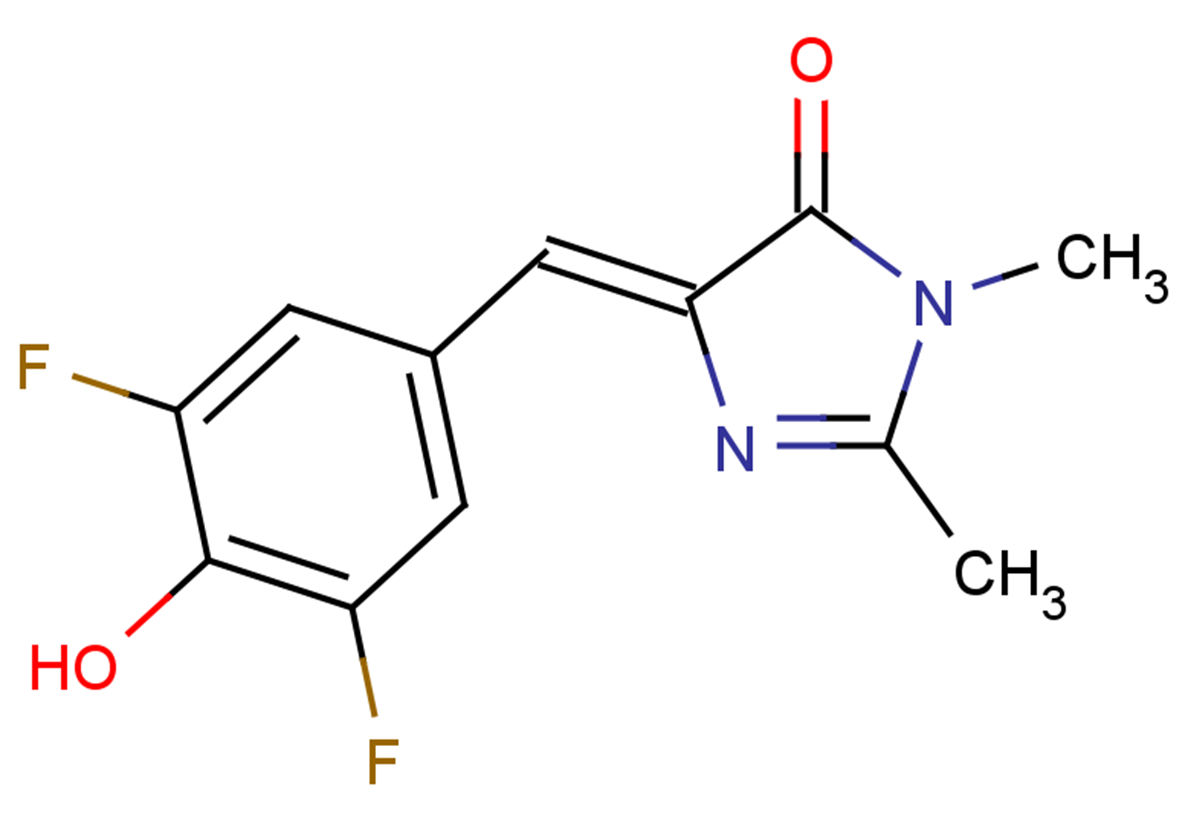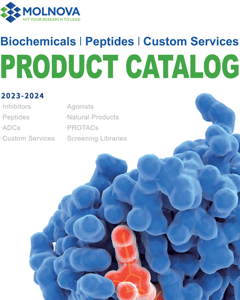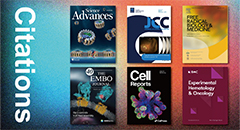
DFHBI
CAS No. 1241390-29-3
DFHBI( —— )
Catalog No. M23414 CAS No. 1241390-29-3
DFHBI is a small molecule, resembles the chromophore of green fluorescent protein (GFP).
Purity : >98% (HPLC)
 COA
COA
 Datasheet
Datasheet
 HNMR
HNMR
 HPLC
HPLC
 MSDS
MSDS
 Handing Instructions
Handing Instructions
| Size | Price / USD | Stock | Quantity |
| 2MG | 34 | In Stock |


|
| 5MG | 55 | In Stock |


|
| 10MG | 91 | In Stock |


|
| 25MG | 194 | In Stock |


|
| 50MG | 324 | In Stock |


|
| 100MG | 482 | In Stock |


|
| 200MG | Get Quote | In Stock |


|
| 500MG | Get Quote | In Stock |


|
| 1G | Get Quote | In Stock |


|
Biological Information
-
Product NameDFHBI
-
NoteResearch use only, not for human use.
-
Brief DescriptionDFHBI is a small molecule, resembles the chromophore of green fluorescent protein (GFP).
-
DescriptionDFHBI is a small molecule, resembles the chromophore of green fluorescent protein (GFP). Spinach and DFHBI are essentially nonfluorescent when unbound. The Spinach-DFHBI complex is brightly fluorescent both in vitro and in living cells.
-
In VitroThese RNAs interact with DFHBI to produce a bluish-green fluorescence emission (501 nm) after excitation at 447 nm. Spinach and Spinach2 are RNA aptamers that can be used for the genetic encoding of fluorescent RNA. Spinach2 binds and activates the fluorescence of DFHBI, allowing the dynamic localizations of Spinach2-tagged RNAs to be imaged in live cells. The spectral properties of Spinach2 are limited by DFHBI, which produces fluorescence that is bluish-green and is not optimized for filters commonly used in fluorescence microscopes. Spinach and Spinach2 bind to DFHBI have fluorescence excitation maxima of 447 nm and peak fluorescence emission of 501 nm. Broccoli-tagged RNAs are selectively detected in total cellular RNA by gel electrophoresis followed by staining of gels with DFHBI, the Broccoli-binding fluorophore. Spinach is a 98-nt-long RNA aptamer that binds to and switches on the fluorescence of DFHBI. Both Spinach and DFHBI are essentially nonfluorescent when unbound, whereas the Spinach-DFHBI complex is brightly fluorescent both in vitro and in living cells. DFHBI should be shielded from light. All stock solutions of DFHBI should be maintained in dark tubes or wrapped in foil. Plates containing cultures incubated with DFHBI should be kept in the dark by using a foil overwrap.
-
In Vivo——
-
Synonyms——
-
PathwayOthers
-
TargetOther Targets
-
RecptorOthers
-
Research Area——
-
Indication——
Chemical Information
-
CAS Number1241390-29-3
-
Formula Weight252.22
-
Molecular FormulaC12H10F2N2O2
-
Purity>98% (HPLC)
-
SolubilityDMSO:83.33 mg/mL (330.39 mM)
-
SMILESO=C1N(C)C(C)=N/C1=C\C2=CC(F)=C(O)C(F)=C2
-
Chemical Name——
Shipping & Storage Information
-
Storage(-20℃)
-
ShippingWith Ice Pack
-
Stability≥ 2 years
Reference
1.Song W, et al. Plug-and-play fluorophores extend the spectral properties of Spinach. J Am Chem Soc. 2014 Jan 29;136(4):1198-201.
molnova catalog



related products
-
Nesbuvir
Nesbuvir is a selective hepatitis C virus (HCV) nonstructural protein 5B (NS5B) RNA-dependent polymerase inhibitor.
-
Diazo Biotin-PEG3-al...
Diazo Biotin-PEG3-alkyne is a polyethylene glycol (PEG)-based linker designed specifically for the synthesis of proteolysis-targeting chimeras (PROTACs) .
-
Indaconitine
Indaconitine is a natural product.



 Cart
Cart
 sales@molnova.com
sales@molnova.com


